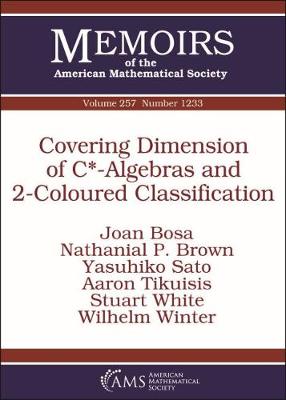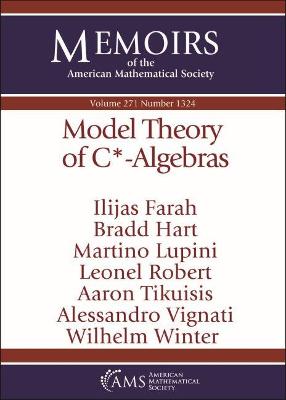Memoirs of the American Mathematical Society
3 total works
Covering Dimension of C*-Algebras and 2-Coloured Classification
by Joan Bosa, Nathanial P. Brown, Yasuhiko Sato, Aaron Tikuisis, and Stuart White
Published 1 January 2019
The authors introduce the concept of finitely coloured equivalence for unital $^*$-homomorphisms between $\mathrm C^*$-algebras, for which unitary equivalence is the $1$-coloured case. They use this notion to classify $^*$-homomorphisms from separable, unital, nuclear $\mathrm C^*$-algebras into ultrapowers of simple, unital, nuclear, $\mathcal Z$-stable $\mathrm C^*$-algebras with compact extremal trace space up to $2$-coloured equivalence by their behaviour on traces; this is based on a $1$-coloured classification theorem for certain order zero maps, also in terms of tracial data.
As an application the authors calculate the nuclear dimension of non-AF, simple, separable, unital, nuclear, $\mathcal Z$-stable $\mathrm C^*$-algebras with compact extremal trace space: it is 1. In the case that the extremal trace space also has finite topological covering dimension, this confirms the remaining open implication of the Toms-Winter conjecture. Inspired by homotopy-rigidity theorems in geometry and topology, the authors derive a ``homotopy equivalence implies isomorphism'' result for large classes of $\mathrm C^*$-algebras with finite nuclear dimension.
As an application the authors calculate the nuclear dimension of non-AF, simple, separable, unital, nuclear, $\mathcal Z$-stable $\mathrm C^*$-algebras with compact extremal trace space: it is 1. In the case that the extremal trace space also has finite topological covering dimension, this confirms the remaining open implication of the Toms-Winter conjecture. Inspired by homotopy-rigidity theorems in geometry and topology, the authors derive a ``homotopy equivalence implies isomorphism'' result for large classes of $\mathrm C^*$-algebras with finite nuclear dimension.
Invariant Means and Finite Representation Theory of C*-Algebras
by Nathanial P. Brown
Published 1 November 2006
Various subsets of the tracial state space of a unital $C^*$-algebra are studied. The largest of these subsets has a natural interpretation as the space of invariant means. II$_1$-factor representations of a class of $C^*$-algebras considered by Sorin Popa are also studied. These algebras are shown to have an unexpected variety of II$_1$-factor representations. In addition to developing some general theory we also show that these ideas are related to numerous other problems in operator algebras.
Model Theory of $\mathrm {C}^*$-Algebras
by Ilijas Farah, Bradd Hart, Martino Lupini, Leonel Robert, and Aaron Tikuisis
Published 30 November 2021


